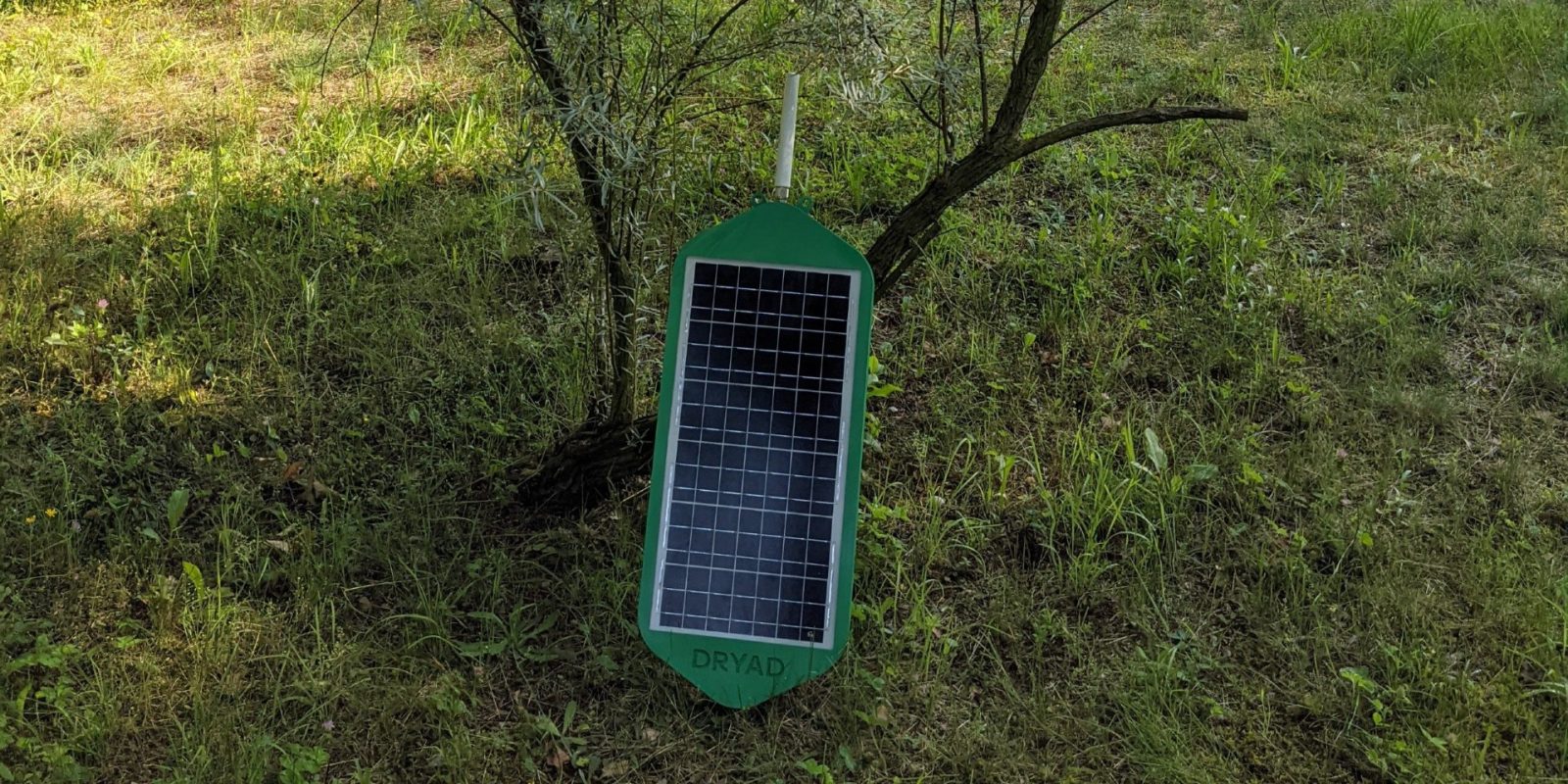
Since 2015, power lines have caused six of California’s 20 most destructive wildfires. Dryad Networks’ solar-powered sensor can detect a fire within 60 minutes, and its IoT network provides accurate location data. Electrek spoke to Carsten Brinkschulte, cofounder and CEO of Dryad Networks, about how utilities can strengthen their wildfire mitigation strategies and how solar is playing a part in forest protection.
Electrek: How does Dryad Networks’ solar-powered wildfire detection system work, and what is its purpose?
Carsten Brinkschulte: As humans, we are responsible for about 80% of wildfires. That means it’s our responsibility to stop them.
Wildfires cause up to 20% of global CO2 emissions – the same amount that all traffic (cars, airplanes, and ships combined) puts into the air. Wildfires cause more than $140 billion of economic losses each year and have a devastating impact on biodiversity, with more than 3 billion animals killed annually.
Within a forest, you can’t confidently rely on a mobile network operator’s coverage, so we’re installing our own wireless network infrastructure. A key innovation of our system is a solar-powered “mesh network architecture” that enables large-scale, off-grid deployments and overcomes problems with limited network coverage.
By taking advantage of the latest Internet of Things (IoT) developments, solar-powered sensors, and “mesh gateways,” Dryad can build a network across even the most remote forest. With inbuilt artificial intelligence, our sensors are placed directly into forests to monitor air composition and can “smell” a fire at its smoldering phase.
The sensors then send an alert signal over our large-scale IoT mesh network architecture. Data is collected and monitored at our cloud monitoring platform, carrying ultra-early alerts of wildfires to the authorities and pinpointing the location within 60 minutes – after which it is more likely to get out of control.
Electrek: You’re currently working with US utilities such as California’s PG&E. Why are utilities deploying your product?
Carsten Brinkschulte: In the US, extreme weather can sometimes create wildfires by blowing trees into power lines. With wildfires, a utility must weather a disaster through coordinated emergency response and prevent the disaster from occurring in the first place. Therefore, the stakes are high, and a utility’s responsibilities for safety and damage control are complex and far-reaching.
Carefully overseeing infrastructure in rural areas and over hundreds of thousands of kilometers is a monumental task. If a utility starts a wildfire, it faces potential regulatory action, enormous settlements, and even criminal prosecution. The rise of extreme wildfires therefore creates a whole host of legal, regulatory, financial, business, and reputational risks for utilities.
To overcome this existential threat, utilities are prioritizing investments in emerging technologies that help them monitor these threats and control them before they get out of control. Utilities are deploying Dryad’s “ultra-early” wildfire detection technology to do so.
Dryad is working with PG&E to demonstrate its Silvanet large-scale IoT network solution for early wildfire detection in Northern California. The Silvanet network includes asset-mounted sensors, a mesh network utilizing LoRaWAN – the leading open standard for long-range radio IoT networks – for
communications, and a cloud-based data analysis dashboard.
Electrek: Which other utilities are you currently working with, and how and where
is your product being deployed?
Carsten Brinkschulte: We are working with several other utility companies globally, and we have several proofs of concept under way in Southern Europe.
Electrek: Why are current solutions for wildfire detection, such as cameras, satellites, spotters, no longer sufficient?
Carsten Brinkschulte: Existing systems that aim to tackle wildfires typically rely on satellites or cameras placed in the forest. However, these systems can take hours or even days to detect a fire as they cannot “see” what’s happening under a tree canopy, which is where wildfires first start. These optical systems also have limited use at night.
In contrast, we can leave our sensors deployed in forests, under tree canopies, for up to 10 years. Our technology accounts for forest canopy densities, and it can operate through the night – ensuring deployment and reliability in sparsely populated regions and difficult-to-reach forests.
As cameras and satellites have a slower response time, by the time firefighters arrive at the scene, the fire has often grown too large and can no longer be contained. Dryad aims to detect wildfires within the first 60 minutes, enabling firefighters to extinguish the fire before it spreads out of control.
Read more: EVs are not a problem during California fire season, they’re the friggin’ solution

Telecoms tech veteran and serial entrepreneur Carsten Brinkschulte is cofounder and CEO of impact tech startup Dryad Networks. The firm’s large-scale IoT network for the ultra-early detection of wildfires is working to help save the world’s forests and fight climate change.
Carsten’s 20 years in mobile network infrastructure includes three successful exits: Core Network Dynamics (acquired by Twilio), Movirtu (acquired by Blackberry), and Synchronica (acquired by DAT Group).
FTC: We use income earning auto affiliate links. More.





Comments